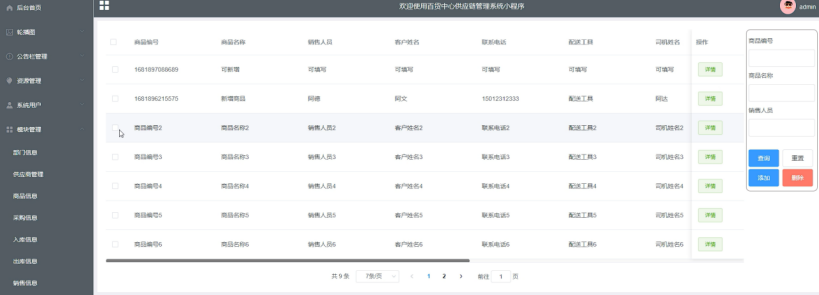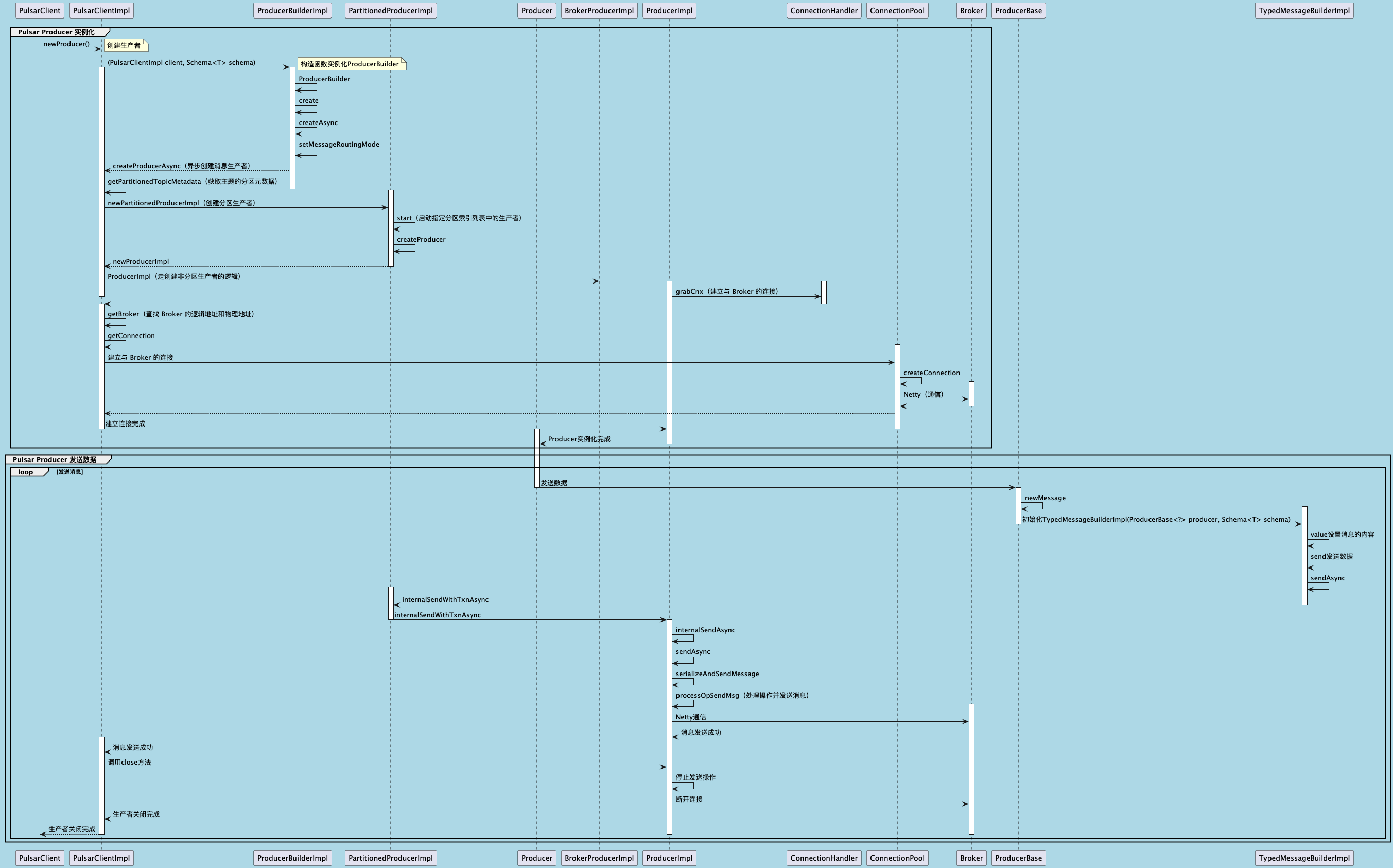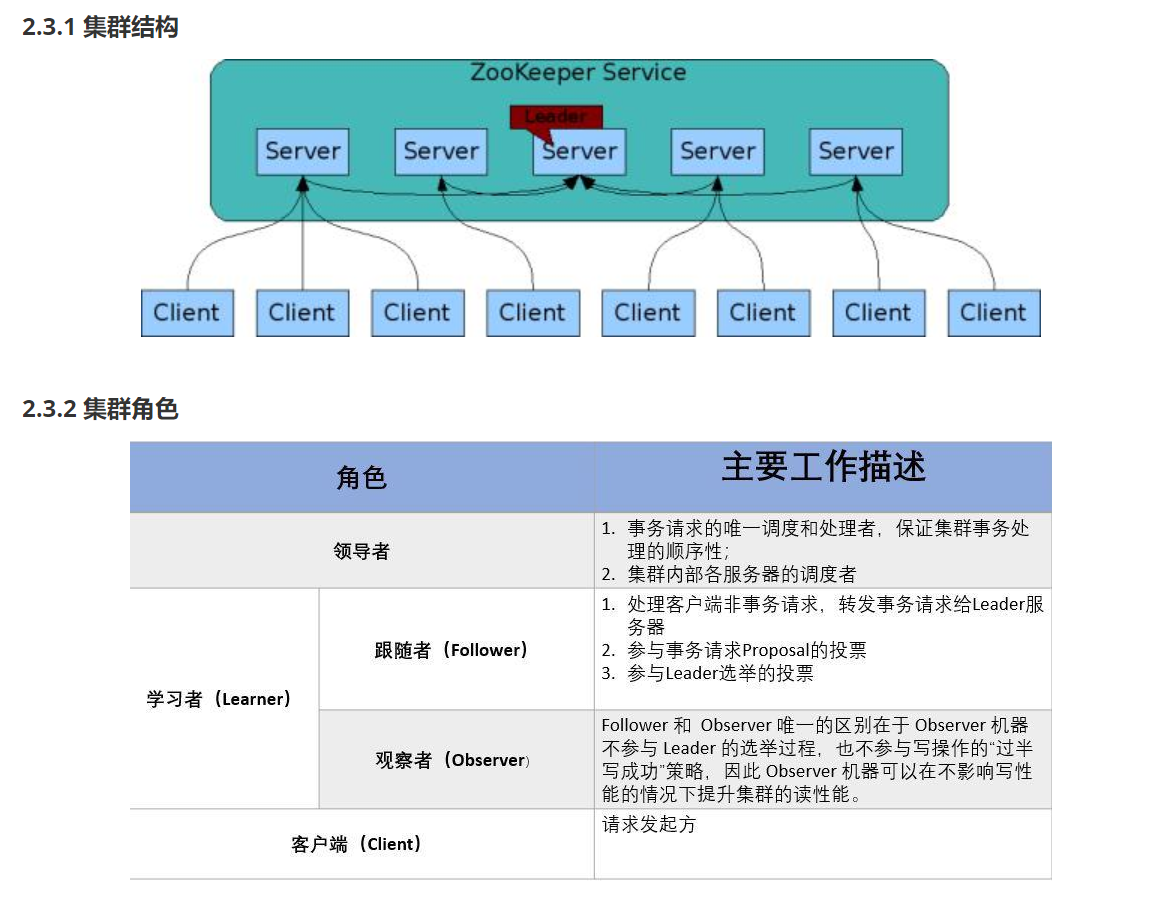C#使用TCP-S7协议读写西门子PLC(三)
接上篇
C#使用TCP-S7协议读写西门子PLC(二)-CSDN博客
这里我们进行封装读写西门子PLC的S7协议命令以及连接西门子PLC并两次握手
新建部分类文件SiemensS7ProtocolUtil.ReadWrite.cs
主要方法:
连接西门子PLC并发送两次握手。两次握手成功后,才真正连接到PLC
public OperateResult ConnectPlcAndHandshake(SiemensPlcCategory siemensPlcCategory, IPEndPoint endPoint, int timeout = 3000)
生成一个写入字节数据的指令
public static OperateResult<byte[]> BuildWriteByteCommand(OperateResult<byte, int, ushort> analysis, byte[] data)
生成一个读取字数据指令头的通用方法【一个字Word占用两个字节Byte】
public static OperateResult<byte[]> BuildReadCommand(OperateResult<byte, int, ushort>[] address, ushort[] length)
SiemensS7ProtocolUtil.ReadWrite.cs源程序如下:
using System;
using System.Collections.Generic;
using System.Linq;
using System.Net;
using System.Net.Sockets;
using System.Text;
using System.Threading.Tasks;namespace PlcSiemesS7Demo
{/// <summary>/// 西门子S7协议,封装读写命令/// 关键方法:连接PLC并发送两次握手、生成写PLC命令,生成读PLC命令/// (1).public OperateResult ConnectPlcAndHandshake(SiemensPlcCategory siemensPlcCategory, IPEndPoint endPoint, int timeout = 3000)/// (2).public static OperateResult<byte[]> BuildWriteByteCommand(OperateResult<byte, int, ushort> analysis, byte[] data)/// (3).BuildReadCommand(OperateResult<byte, int, ushort>[] address, ushort[] length)/// </summary>public partial class SiemensS7ProtocolUtil{#region 西门子S7协议握手【两次握手】命令,固定.不同型号的PLC握手命令有少许不同private byte[] plcHead1 = new byte[22]{0x03,0x00,0x00,0x16,0x11,0xE0,0x00,0x00,0x00,0x01,0x00,0xC0,0x01,0x0A,0xC1,0x02,0x01,0x02,0xC2,0x02,0x01,0x00};private byte[] plcHead2 = new byte[25]{0x03,0x00,0x00,0x19,0x02,0xF0,0x80,0x32,0x01,0x00,0x00,0x04,0x00,0x00,0x08,0x00,0x00,0xF0,0x00,0x00,0x01,0x00,0x01,0x01,0xE0};private byte[] plcHead1_200smart = new byte[22]{0x03,0x00,0x00,0x16,0x11,0xE0,0x00,0x00,0x00,0x01,0x00,0xC1,0x02,0x10,0x00,0xC2,0x02,0x03,0x00,0xC0,0x01,0x0A};private byte[] plcHead2_200smart = new byte[25]{0x03,0x00,0x00,0x19,0x02,0xF0,0x80,0x32,0x01,0x00,0x00,0xCC,0xC1,0x00,0x08,0x00,0x00,0xF0,0x00,0x00,0x01,0x00,0x01,0x03,0xC0};#endregion/// <summary>/// 连接西门子PLC并发送两次握手。两次握手成功后,才真正连接到PLC/// 使用网络终结点和PLC型号枚举进行连接/// </summary>/// <param name="siemensPlcCategory"></param>/// <param name="endPoint"></param>/// <param name="timeout"></param>/// <returns></returns>public OperateResult ConnectPlcAndHandshake(SiemensPlcCategory siemensPlcCategory, IPEndPoint endPoint, int timeout = 3000){isConnected = false;this.SiemensPlcCategory = siemensPlcCategory;switch (siemensPlcCategory){case SiemensPlcCategory.S1200:case SiemensPlcCategory.S1500:plcHead1[21] = 0;break;case SiemensPlcCategory.S300:plcHead1[21] = 2;break;case SiemensPlcCategory.S400:plcHead1[21] = 3;plcHead1[17] = 0x00;break;case SiemensPlcCategory.S200Smart:plcHead1 = plcHead1_200smart;plcHead2 = plcHead2_200smart;break;default:plcHead1[18] = 0;break;}// 重新连接之前,先将旧的数据进行清空CoreSocket?.Close();OperateResult<Socket> result = ConnectPlc(endPoint, timeout);if (result.IsSuccess){// 第一次握手 -> First handshakeOperateResult<byte[]> read_first = SendDataAndWaitResult(result.Content, plcHead1);if (!read_first.IsSuccess){RecordLogEvent?.Invoke($"第一次握手出错:{read_first.Message}");return read_first;}// 第二次握手 -> Second handshakeOperateResult<byte[]> read_second = SendDataAndWaitResult(result.Content, plcHead2);if (!read_second.IsSuccess){RecordLogEvent?.Invoke($"第二次握手出错:{read_second.Message}");return read_second;}// 返回成功的信号 CoreSocket = result.Content;result.IsSuccess = true;isConnected = true;RecordLogEvent?.Invoke($"连接PLC【{endPoint}】成功并且两次握手成功");}else{result.Content?.Close();CoreSocket = null;result.IsSuccess = false;}return result;}/// <summary>/// 连接西门子PLC并发送两次握手。两次握手成功后,才真正连接到PLC/// 使用IP地址和端口【默认102】和PLC型号枚举进行连接/// </summary>/// <param name="siemensPlcCategory"></param>/// <param name="ipAddress"></param>/// <param name="port"></param>/// <param name="timeout"></param>/// <returns></returns>public OperateResult ConnectPlcAndHandshake(SiemensPlcCategory siemensPlcCategory, string ipAddress, int port = 102, int timeout = 3000){return ConnectPlcAndHandshake(siemensPlcCategory, new IPEndPoint(IPAddress.Parse(ipAddress), port), timeout);}private OperateResult<byte[]> Read(OperateResult<byte, int, ushort>[] address, ushort[] length){// 构建指令 -> Build read commandOperateResult<byte[]> command = BuildReadCommand(address, length);if (!command.IsSuccess) return command;// 核心交互 -> Core InteractionsOperateResult<byte[]> read = SendDataAndWaitResult(command.Content);if (!read.IsSuccess) return read;// 分析结果 -> Analysis resultsint receiveCount = 0;for (int i = 0; i < length.Length; i++){receiveCount += length[i];}if (read.Content.Length >= 21 && read.Content[20] == length.Length){byte[] buffer = new byte[receiveCount];int kk = 0;int ll = 0;for (int ii = 21; ii < read.Content.Length; ii++){if ((ii + 1) < read.Content.Length){if (read.Content[ii] == 0xFF && read.Content[ii + 1] == 0x04){Array.Copy(read.Content, ii + 4, buffer, ll, length[kk]);ii += length[kk] + 3;ll += length[kk];kk++;}}}return OperateResult.CreateSuccessResult(buffer);}else{return new OperateResult<byte[]>() { ErrorCode = read.ErrorCode, Message = "数据块长度校验失败,请检查是否开启put/get以及关闭db块优化" };}}private OperateResult<byte[]> ReadBitFromPLC(OperateResult<byte, int, ushort> analysis){// 指令生成 -> Build bit read commandOperateResult<byte[]> command = BuildBitReadCommand(analysis);if (!command.IsSuccess) return OperateResult.CreateFailedResult<byte[]>(command);// 核心交互 -> Core interactiveOperateResult<byte[]> read = SendDataAndWaitResult(command.Content);if (!read.IsSuccess) return read;// 分析结果 -> Analysis read resultint receiveCount = 1;if (read.Content.Length >= 21 && read.Content[20] == 1){byte[] buffer = new byte[receiveCount];if (22 < read.Content.Length){if (read.Content[21] == 0xFF && read.Content[22] == 0x03){buffer[0] = read.Content[25];}}return OperateResult.CreateSuccessResult(buffer);}else{return new OperateResult<byte[]>(read.ErrorCode, "数据块长度校验失败,请检查是否开启put/get以及关闭db块优化");}}/// <summary>/// 基础的写入数据的操作支持 -> Operational support for the underlying write data/// </summary>/// <param name="entireValue">完整的字节数据 -> Full byte data</param>/// <returns>是否写入成功的结果对象 -> Whether to write a successful result object</returns>private OperateResult WriteBase(byte[] entireValue){OperateResult<byte[]> write = SendDataAndWaitResult(entireValue);if (!write.IsSuccess) return write;if (write.Content[write.Content.Length - 1] != 0xFF){// 写入异常 -> WriteErrorreturn new OperateResult(write.Content[write.Content.Length - 1], "写入数据异常,代号为:" + write.Content[write.Content.Length - 1]);}else{return OperateResult.CreateSuccessResult();}}/// <summary>/// 生成一个写入字节数据的指令 -> Generate an instruction to write byte data/// </summary>/// <param name="analysis">内存区域标识,起始地址*8,DB块编号 </param>/// <param name="data">原始的字节数据 -> Raw byte data</param>/// <returns>包含结果对象的报文 -> Message containing the result object</returns>public static OperateResult<byte[]> BuildWriteByteCommand(OperateResult<byte, int, ushort> analysis, byte[] data){byte[] _PLCCommand = new byte[35 + data.Length];_PLCCommand[0] = 0x03;_PLCCommand[1] = 0x00;// 长度 -> Length_PLCCommand[2] = (byte)((35 + data.Length) / 256);_PLCCommand[3] = (byte)((35 + data.Length) % 256);// 固定 -> Fixed_PLCCommand[4] = 0x02;_PLCCommand[5] = 0xF0;_PLCCommand[6] = 0x80;_PLCCommand[7] = 0x32;// 命令 发 -> command to send_PLCCommand[8] = 0x01;// 标识序列号 -> Identification serial Number_PLCCommand[9] = 0x00;_PLCCommand[10] = 0x00;_PLCCommand[11] = 0x00;_PLCCommand[12] = 0x01;// 固定 -> Fixed_PLCCommand[13] = 0x00;_PLCCommand[14] = 0x0E;// 写入长度+4 -> Write Length +4_PLCCommand[15] = (byte)((4 + data.Length) / 256);_PLCCommand[16] = (byte)((4 + data.Length) % 256);// 读写指令 -> Read and write instructions_PLCCommand[17] = 0x05;// 写入数据块个数 -> Number of data blocks written_PLCCommand[18] = 0x01;// 固定,返回数据长度 -> Fixed, return data length_PLCCommand[19] = 0x12;_PLCCommand[20] = 0x0A;_PLCCommand[21] = 0x10;// 写入方式,1是按位,2是按字 -> Write mode, 1 is bitwise, 2 is by word_PLCCommand[22] = 0x02;// 写入数据的个数 -> Number of Write Data_PLCCommand[23] = (byte)(data.Length / 256);_PLCCommand[24] = (byte)(data.Length % 256);// DB块编号,如果访问的是DB块的话 -> DB block number, if you are accessing a DB block_PLCCommand[25] = (byte)(analysis.Content3 / 256);_PLCCommand[26] = (byte)(analysis.Content3 % 256);// 写入数据的类型 -> Types of writing data_PLCCommand[27] = analysis.Content1;// 偏移位置 -> Offset position 因65535*8 即0x07 FF F8 偏移地址占用三个字节:下面注释的三行等价于BitConverter.GetBytes(Int32) //_PLCCommand[28] = (byte)(analysis.Content2 / 256 / 256 % 256);//_PLCCommand[29] = (byte)(analysis.Content2 / 256 % 256);//_PLCCommand[30] = (byte)(analysis.Content2 % 256);byte[] offsetAddress = BitConverter.GetBytes(analysis.Content2);_PLCCommand[28] = offsetAddress[2];_PLCCommand[29] = offsetAddress[1];_PLCCommand[30] = offsetAddress[0];// 按字写入 -> Write by Word_PLCCommand[31] = 0x00;_PLCCommand[32] = 0x04;// 按位计算的长度 -> The length of the bitwise calculation_PLCCommand[33] = (byte)(data.Length * 8 / 256);_PLCCommand[34] = (byte)(data.Length * 8 % 256);data.CopyTo(_PLCCommand, 35);return OperateResult.CreateSuccessResult(_PLCCommand);}public static OperateResult<byte[]> BuildWriteBitCommand(OperateResult<byte, int, ushort> analysis, bool data){//OperateResult<byte, int, ushort> analysis = AnalysisAddress(address);if (!analysis.IsSuccess) return OperateResult.CreateFailedResult<byte[]>(analysis);byte[] buffer = new byte[1];buffer[0] = data ? (byte)0x01 : (byte)0x00;byte[] _PLCCommand = new byte[35 + buffer.Length];_PLCCommand[0] = 0x03;_PLCCommand[1] = 0x00;// 长度 -> length_PLCCommand[2] = (byte)((35 + buffer.Length) / 256);_PLCCommand[3] = (byte)((35 + buffer.Length) % 256);// 固定 -> fixed_PLCCommand[4] = 0x02;_PLCCommand[5] = 0xF0;_PLCCommand[6] = 0x80;_PLCCommand[7] = 0x32;// 命令 发 -> command to send_PLCCommand[8] = 0x01;// 标识序列号 -> Identification serial Number_PLCCommand[9] = 0x00;_PLCCommand[10] = 0x00;_PLCCommand[11] = 0x00;_PLCCommand[12] = 0x01;// 固定 -> fixed_PLCCommand[13] = 0x00;_PLCCommand[14] = 0x0E;// 写入长度+4 -> Write Length +4_PLCCommand[15] = (byte)((4 + buffer.Length) / 256);_PLCCommand[16] = (byte)((4 + buffer.Length) % 256);// 命令起始符 -> Command start character_PLCCommand[17] = 0x05;// 写入数据块个数 -> Number of data blocks written_PLCCommand[18] = 0x01;_PLCCommand[19] = 0x12;_PLCCommand[20] = 0x0A;_PLCCommand[21] = 0x10;// 写入方式,1是按位,2是按字 -> Write mode, 1 is bitwise, 2 is by word_PLCCommand[22] = 0x01;// 写入数据的个数 -> Number of Write Data_PLCCommand[23] = (byte)(buffer.Length / 256);_PLCCommand[24] = (byte)(buffer.Length % 256);// DB块编号,如果访问的是DB块的话 -> DB block number, if you are accessing a DB block_PLCCommand[25] = (byte)(analysis.Content3 / 256);_PLCCommand[26] = (byte)(analysis.Content3 % 256);// 写入数据的类型 -> Types of writing data_PLCCommand[27] = analysis.Content1;// 偏移位置 -> Offset position_PLCCommand[28] = (byte)(analysis.Content2 / 256 / 256);_PLCCommand[29] = (byte)(analysis.Content2 / 256);_PLCCommand[30] = (byte)(analysis.Content2 % 256);// 按位写入 -> Bitwise Write_PLCCommand[31] = 0x00;_PLCCommand[32] = 0x03;// 按位计算的长度 -> The length of the bitwise calculation_PLCCommand[33] = (byte)(buffer.Length / 256);_PLCCommand[34] = (byte)(buffer.Length % 256);buffer.CopyTo(_PLCCommand, 35);return OperateResult.CreateSuccessResult(_PLCCommand);}/// <summary>/// 解析地址,返回元组【地址类型,起始地址,DB块编号】/// </summary>/// <param name="plcRegisterCategory">寄存器类型</param>/// <param name="offsetAddress">偏移量,偏移地址</param>/// <param name="dbNumber">DB块号</param>/// <param name="bitIndex">位索引0~7</param>/// <returns></returns>private static OperateResult<byte, int, ushort> AnalysisAddress(PlcRegisterCategory plcRegisterCategory, ushort offsetAddress, ushort dbNumber = 0, int bitIndex = 0){//地址类型,起始地址,DB块编号OperateResult<byte, int, ushort> result = new OperateResult<byte, int, ushort>();result.Content3 = 0;switch (plcRegisterCategory){case PlcRegisterCategory.DB:result.Content1 = 0x84;result.Content2 = offsetAddress * 8 + bitIndex;result.Content3 = dbNumber;break;case PlcRegisterCategory.M:result.Content1 = 0x83;result.Content2 = offsetAddress * 8 + bitIndex;break;case PlcRegisterCategory.Input:result.Content1 = 0x81;result.Content2 = offsetAddress * 8 + bitIndex;break;case PlcRegisterCategory.Quit:result.Content1 = 0x82;result.Content2 = offsetAddress * 8 + bitIndex;break;case PlcRegisterCategory.T:result.Content1 = 0x1D;result.Content2 = offsetAddress * 8 + bitIndex;break;case PlcRegisterCategory.C:result.Content1 = 0x1C;result.Content2 = offsetAddress * 8 + bitIndex;break;case PlcRegisterCategory.V:result.Content1 = 0x84;result.Content2 = offsetAddress * 8 + bitIndex;result.Content3 = 1;break;default:result.Message = "输入的类型不支持,请重新输入";result.Content1 = 0;result.Content2 = 0;result.Content3 = 0;return result;}result.IsSuccess = true;return result;}/// <summary>/// 生成一个读取字数据指令头的通用方法【一个字Word占用两个字节Byte】 ->/// A general method for generating a command header to read a Word data/// </summary>/// <param name="address">起始地址,例如M100,I0,Q0,DB2.100 ->/// Start address, such as M100,I0,Q0,DB2.100</param>/// <param name="length">读取数据长度 -> Read Data length</param>/// <returns>包含结果对象的报文 -> Message containing the result object</returns>public static OperateResult<byte[]> BuildReadCommand(OperateResult<byte, int, ushort>[] address, ushort[] length){if (address == null) throw new NullReferenceException("address");if (length == null) throw new NullReferenceException("count");if (address.Length != length.Length) throw new Exception("两个参数的个数不一致");if (length.Length > 19) throw new Exception("读取的数组数量不允许大于19");int readCount = length.Length;byte[] _PLCCommand = new byte[19 + readCount * 12];// ======================================================================================_PLCCommand[0] = 0x03; // 报文头 -> Head_PLCCommand[1] = 0x00;_PLCCommand[2] = (byte)(_PLCCommand.Length / 256); // 长度 -> Length_PLCCommand[3] = (byte)(_PLCCommand.Length % 256);_PLCCommand[4] = 0x02; // 固定 -> Fixed_PLCCommand[5] = 0xF0;_PLCCommand[6] = 0x80;_PLCCommand[7] = 0x32; // 协议标识 -> Protocol identification_PLCCommand[8] = 0x01; // 命令:发 -> Command: Send_PLCCommand[9] = 0x00; // 冗余标识(保留)-> redundancy identification (reserved): 0x0000;_PLCCommand[10] = 0x00; // protocol data unit reference; it’s increased by request event;_PLCCommand[11] = 0x00;_PLCCommand[12] = 0x01; // 参数命令数据总长度 -> Parameter command Data total length_PLCCommand[13] = (byte)((_PLCCommand.Length - 17) / 256);_PLCCommand[14] = (byte)((_PLCCommand.Length - 17) % 256);_PLCCommand[15] = 0x00; // 读取内部数据时为00,读取CPU型号为Data数据长度 -> Read internal data is 00, read CPU model is data length_PLCCommand[16] = 0x00;// =====================================================================================_PLCCommand[17] = 0x04; // 读写指令,04读,05写 -> Read-write instruction, 04 read, 05 Write_PLCCommand[18] = (byte)readCount; // 读取数据块个数 -> Number of data blocks readfor (int ii = 0; ii < readCount; ii++){//===========================================================================================// 指定有效值类型 -> Specify a valid value type_PLCCommand[19 + ii * 12] = 0x12;// 接下来本次地址访问长度 -> The next time the address access length_PLCCommand[20 + ii * 12] = 0x0A;// 语法标记,ANY -> Syntax tag, any_PLCCommand[21 + ii * 12] = 0x10;// 按字为单位 -> by word_PLCCommand[22 + ii * 12] = 0x02;// 访问数据的个数 -> Number of Access data_PLCCommand[23 + ii * 12] = (byte)(length[ii] / 256);_PLCCommand[24 + ii * 12] = (byte)(length[ii] % 256);// DB块编号,如果访问的是DB块的话 -> DB block number, if you are accessing a DB block_PLCCommand[25 + ii * 12] = (byte)(address[ii].Content3 / 256);_PLCCommand[26 + ii * 12] = (byte)(address[ii].Content3 % 256);// 访问数据类型 -> Accessing data types_PLCCommand[27 + ii * 12] = address[ii].Content1;// 偏移位置 -> Offset position_PLCCommand[28 + ii * 12] = (byte)(address[ii].Content2 / 256 / 256 % 256);_PLCCommand[29 + ii * 12] = (byte)(address[ii].Content2 / 256 % 256);_PLCCommand[30 + ii * 12] = (byte)(address[ii].Content2 % 256);}return OperateResult.CreateSuccessResult(_PLCCommand);}/// <summary>/// 生成一个位读取数据指令头的通用方法 ->/// A general method for generating a bit-read-Data instruction header/// </summary>/// <param name="address">起始地址,例如M100.0,I0.1,Q0.1,DB2.100.2 ->/// Start address, such as M100.0,I0.1,Q0.1,DB2.100.2/// </param>/// <returns>包含结果对象的报文 -> Message containing the result object</returns>public static OperateResult<byte[]> BuildBitReadCommand(OperateResult<byte, int, ushort> analysis){//OperateResult<byte, int, ushort> analysis = AnalysisAddress(address);if (!analysis.IsSuccess) return OperateResult.CreateFailedResult<byte[]>(analysis);byte[] _PLCCommand = new byte[31];_PLCCommand[0] = 0x03;_PLCCommand[1] = 0x00;// 长度 -> Length_PLCCommand[2] = (byte)(_PLCCommand.Length / 256);_PLCCommand[3] = (byte)(_PLCCommand.Length % 256);// 固定 -> Fixed_PLCCommand[4] = 0x02;_PLCCommand[5] = 0xF0;_PLCCommand[6] = 0x80;_PLCCommand[7] = 0x32;// 命令:发 -> command to send_PLCCommand[8] = 0x01;// 标识序列号_PLCCommand[9] = 0x00;_PLCCommand[10] = 0x00;_PLCCommand[11] = 0x00;_PLCCommand[12] = 0x01;// 命令数据总长度 -> Identification serial Number_PLCCommand[13] = (byte)((_PLCCommand.Length - 17) / 256);_PLCCommand[14] = (byte)((_PLCCommand.Length - 17) % 256);_PLCCommand[15] = 0x00;_PLCCommand[16] = 0x00;// 命令起始符 -> Command start character_PLCCommand[17] = 0x04;// 读取数据块个数 -> Number of data blocks read_PLCCommand[18] = 0x01;//===========================================================================================// 读取地址的前缀 -> Read the prefix of the address_PLCCommand[19] = 0x12;_PLCCommand[20] = 0x0A;_PLCCommand[21] = 0x10;// 读取的数据时位 -> Data read-time bit_PLCCommand[22] = 0x01;// 访问数据的个数 -> Number of Access data_PLCCommand[23] = 0x00;_PLCCommand[24] = 0x01;// DB块编号,如果访问的是DB块的话 -> DB block number, if you are accessing a DB block_PLCCommand[25] = (byte)(analysis.Content3 / 256);_PLCCommand[26] = (byte)(analysis.Content3 % 256);// 访问数据类型 -> Types of reading data_PLCCommand[27] = analysis.Content1;// 偏移位置 -> Offset position_PLCCommand[28] = (byte)(analysis.Content2 / 256 / 256 % 256);_PLCCommand[29] = (byte)(analysis.Content2 / 256 % 256);_PLCCommand[30] = (byte)(analysis.Content2 % 256);return OperateResult.CreateSuccessResult(_PLCCommand);}}
}
相关文章:
)
C#使用TCP-S7协议读写西门子PLC(三)
接上篇 C#使用TCP-S7协议读写西门子PLC(二)-CSDN博客 这里我们进行封装读写西门子PLC的S7协议命令以及连接西门子PLC并两次握手 新建部分类文件SiemensS7ProtocolUtil.ReadWrite.cs 主要方法: 连接西门子PLC并发送两次握手。两次握手成功后,才真正连…...

铝型材及其常用紧固件、连接件介绍
铝型材介绍(包括紧固件和连接件以及走线) 铝型材 铝型材一般是6063铝合金挤压成型,分为欧标和国标两个标准。(左边国标,右边欧标,欧标槽宽一点) 由于槽型不一样,相关的螺栓和螺母也…...
-安装开发所需工具)
【裸机装机系列】7.kali(ubuntu)-安装开发所需工具
如果你是后端或是人工智能AI岗,可以安装以下推荐的软件: 1> sublime sublime官网 下载deb文件 安装命令 sudo dpkg -i sublime-text_build-4143_amd64.deb2> vscode 安装前置软件 sudo apt install curl gpg software-properties-common apt-t…...

[C语言]第九节 函数一基础知识到高级技巧的全景探索
目录 9.1 函数的概念 9.2 库函数 9.2.1 标准库与库函数 示例:常见库函数 9.2.2 标准库与头文件的关系 参考资料和学习工具 如何使用库函数 编辑 9.3 ⾃定义函数 9.3.1 函数的语法形式 9.3.2函数的举例 9.4 实参与形参 9.4.1 什么是实参? 9…...

1.1 计算机网络基本概述
欢迎大家订阅【计算机网络】学习专栏,开启你的计算机网络学习之旅! 文章目录 前言一、网络的基本概念二、集线器、交换机和路由器三、互连网与互联网四、网络的类型五、互连网的组成1. 边缘部分2. 核心部分 六、网络协议 前言 计算机网络是现代信息社会…...

Linux环境基础开发工具使用(gcc/g++与makefile)
1.Linux编译器-gcc/g使用 1. 背景知识 接下来的操作,我以gcc为例,因为两者选项都是通用的,所以也就相当于间接学习了 1.预处理(进行宏替换) 2.编译(生成汇编) 3.汇编(生成机器可识别代码)…...

PointNet++改进策略 :模块改进 | EdgeConv | DGCNN, 动态图卷积在3d任务上应用
目录 介绍核心思想及其实现核心思想实现步骤 如何改进PointNet**局部几何结构的处理****动态图的引入****特征聚合的灵活性****全局和局部特征的结合** 论文题目:Dynamic Graph CNN for Learning on Point Clouds发布期刊:TOG作者单位:麻省理…...

FFmpeg源码:skip_bits、skip_bits1、show_bits函数分析
GetBitContext结构体和其相关的函数分析: FFmpeg中位操作相关的源码:GetBitContext结构体,init_get_bits函数、get_bits1函数和get_bits函数分析 FFmpeg源码:skip_bits、skip_bits1、show_bits函数分析 一、skip_bits函数 skip…...

加密
一、加密 加密运算需要两个输入:密钥和明文 解密运算也需要两个输入:密钥和密文 密文通常看起来都是晦涩难懂、毫无逻辑的,所以我们一般会通过传输或者存储密文来保护私密数据,当然,这建立在一个基础上,…...

Kibana:如何使用魔法公式创建具有影响力的可视化效果?(第 1 部分)
作者:来自 Elastic Vincent du Sordet 我们将看到 Kibana Lens 编辑器中的神奇数学公式如何帮助突出显示高值。 简介 在上一篇博文《作为非设计师设计直观的 Kibana 仪表板》中,我们强调了创建直观仪表板的重要性。它展示了简单的更改(分组…...

【C++】多态and多态原理
目录 一、多态的概念 二、多态的定义及实现 🌟多态的构成条件 🌟虚函数 🌟虚函数的重写 🌠小贴士: 🌟C11 override 和 final 🌟重载、重写(覆盖)、重定义…...

C# 实现二维数据数组导出到 Excel
目录 功能需求 范例运行环境 Excel DCOM 配置 设计实现 组件库引入 编辑 方法设计 生成二维数据数组 核心方法实现 调用示例 总结 功能需求 将数据库查询出来的数据导出并生成 Excel 文件,是项目中经常使用的一项功能。本文将介绍通过数据集生成二维…...
nlohmann::json中有中文时调用dump转string抛出异常的问题
问题描述 Winodows下C开发想使用一个json库,使用的nlohmann::json,但是遇到json中使用中文时,转成string,会抛出异常。 nlohmann::json contentJson;contentJson["chinese"] "哈哈哈";std::string test con…...

Unity中InputField一些属性的理解
先看代码: using UnityEngine; using UnityEngine.UI;public class TestInput : MonoBehaviour {[SerializeField]InputField inputField;void Start(){Debug.Log(inputField.text);Debug.Log(inputField.text.Length);Debug.Log(inputField.preferredWidth);Debug…...

【webpack4系列】webpack构建速度和体积优化策略(五)
文章目录 速度分析:使用 speed-measure-webpack-plugin体积分析:使用webpack-bundle-analyzer使用高版本的 webpack 和 Node.js多进程/多实例构建资源并行解析可选方案使用 HappyPack 解析资源使用 thread-loader 解析资源 多进程并行压缩代码方法一&…...

从零开始搭建 PHP
🛠️ 从零开始搭建 PHP 环境:详细教程 PHP(Hypertext Preprocessor)是最流行的后端脚本语言之一,广泛用于构建动态网站和 Web 应用程序。在开始 PHP 开发之前,首先需要搭建 PHP 运行环境。无论你使用的是 …...

【数据结构】8——图3,十字链表,邻接多重表
数据结构8——图3,十字链表,邻接多重表 文章目录 数据结构8——图3,十字链表,邻接多重表前言一、十字链表结构例子 复杂例子 二、邻接多重表(Adjacency Multilist)例子 前言 除了之前的邻接矩阵和邻接表 …...

eth-trunk 笔记
LACP:Link Aggregation Control protocol 链路聚合控制协议 将多条以太网物理链路捆绑在一起成为一条逻辑链路,从而实现增加链路带宽的目的。同时,这些捆绑在一起的链路通过相互间的动态备份,可以有效地提高链路的可靠性 一、配…...

通信工程学习:什么是接入网(AN)中的TF传送功能
接入网(AN)中的TF传送功能 在通信工程中,TF(Transfer Function)传送功能是指为接入网(AN)不同位置之间提供通道和传输介质,以实现数据的有效传输。以下是关于TF传送功能的详细解释&a…...

【JavaEE】IO基础知识及代码演示
目录 一、File 1.1 观察get系列特点差异 1.2 创建文件 1.3.1 delete()删除文件 1.3.2 deleteOnExit()删除文件 1.4 mkdir 与 mkdirs的区别 1.5 文件重命名 二、文件内容的读写----数据流 1.1 InputStream 1.1.1 使用 read() 读取文件 1.2 OutputStream 1.3 代码演示…...

springboot 百货中心供应链管理系统小程序
一、前言 随着我国经济迅速发展,人们对手机的需求越来越大,各种手机软件也都在被广泛应用,但是对于手机进行数据信息管理,对于手机的各种软件也是备受用户的喜爱,百货中心供应链管理系统被用户普遍使用,为方…...

MySQL 隔离级别:脏读、幻读及不可重复读的原理与示例
一、MySQL 隔离级别 MySQL 提供了四种隔离级别,用于控制事务之间的并发访问以及数据的可见性,不同隔离级别对脏读、幻读、不可重复读这几种并发数据问题有着不同的处理方式,具体如下: 隔离级别脏读不可重复读幻读性能特点及锁机制读未提交(READ UNCOMMITTED)允许出现允许…...

Python爬虫实战:研究feedparser库相关技术
1. 引言 1.1 研究背景与意义 在当今信息爆炸的时代,互联网上存在着海量的信息资源。RSS(Really Simple Syndication)作为一种标准化的信息聚合技术,被广泛用于网站内容的发布和订阅。通过 RSS,用户可以方便地获取网站更新的内容,而无需频繁访问各个网站。 然而,互联网…...

聊聊 Pulsar:Producer 源码解析
一、前言 Apache Pulsar 是一个企业级的开源分布式消息传递平台,以其高性能、可扩展性和存储计算分离架构在消息队列和流处理领域独树一帜。在 Pulsar 的核心架构中,Producer(生产者) 是连接客户端应用与消息队列的第一步。生产者…...

MVC 数据库
MVC 数据库 引言 在软件开发领域,Model-View-Controller(MVC)是一种流行的软件架构模式,它将应用程序分为三个核心组件:模型(Model)、视图(View)和控制器(Controller)。这种模式有助于提高代码的可维护性和可扩展性。本文将深入探讨MVC架构与数据库之间的关系,以…...

对WWDC 2025 Keynote 内容的预测
借助我们以往对苹果公司发展路径的深入研究经验,以及大语言模型的分析能力,我们系统梳理了多年来苹果 WWDC 主题演讲的规律。在 WWDC 2025 即将揭幕之际,我们让 ChatGPT 对今年的 Keynote 内容进行了一个初步预测,聊作存档。等到明…...

oracle与MySQL数据库之间数据同步的技术要点
Oracle与MySQL数据库之间的数据同步是一个涉及多个技术要点的复杂任务。由于Oracle和MySQL的架构差异,它们的数据同步要求既要保持数据的准确性和一致性,又要处理好性能问题。以下是一些主要的技术要点: 数据结构差异 数据类型差异ÿ…...

什么?连接服务器也能可视化显示界面?:基于X11 Forwarding + CentOS + MobaXterm实战指南
文章目录 什么是X11?环境准备实战步骤1️⃣ 服务器端配置(CentOS)2️⃣ 客户端配置(MobaXterm)3️⃣ 验证X11 Forwarding4️⃣ 运行自定义GUI程序(Python示例)5️⃣ 成功效果
代理篇12|深入理解 Vite中的Proxy接口代理配置
在前端开发中,常常会遇到 跨域请求接口 的情况。为了解决这个问题,Vite 和 Webpack 都提供了 proxy 代理功能,用于将本地开发请求转发到后端服务器。 什么是代理(proxy)? 代理是在开发过程中,前端项目通过开发服务器,将指定的请求“转发”到真实的后端服务器,从而绕…...

HDFS分布式存储 zookeeper
hadoop介绍 狭义上hadoop是指apache的一款开源软件 用java语言实现开源框架,允许使用简单的变成模型跨计算机对大型集群进行分布式处理(1.海量的数据存储 2.海量数据的计算)Hadoop核心组件 hdfs(分布式文件存储系统)&a…...
